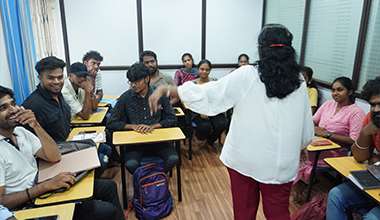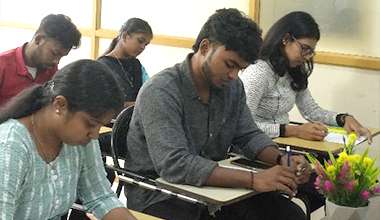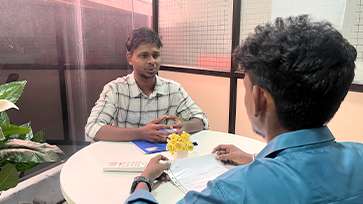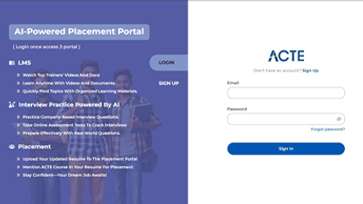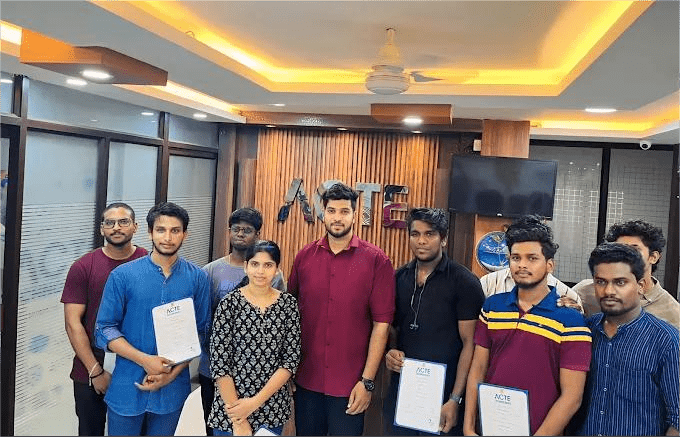The internet of things (iot) is a hot issue with significant technical, social, and economic implications. Consumer items, durable goods, automobiles and trucks, industrial and utility components, sensors, and other ordinary objects are being integrated with internet connectivity and powerful data analysis capabilities to alter the way we work, live, and play. The impact of iot on the internet and economy has been estimated to be as high as 100 billion linked iot devices and a global economic impact of more than 817 trillion, according to some estimates. Because IoT is growing over every sector, now is the time to familiarise yourself with and train yourself on one of the most in-demand talents today. Join the finest IoT Course in Kolkata to take your career to the next level. Our IoT Course is comprised of real-world projects. ACTE is a good location to take an IoT Certification Course with low course prices.
Additional Info
Career path in IOT:
New and improved technologies are continually being created in such a quickly growing industry in future career. There are plenty of opportunities for talented tech experts in various areas of iot, including hardware design, software development, network and systems engineering, product testing and validation, security analysis, data science, database programming, and even technical documentation. Each iot device consists of numerous interconnected systems, and someone must build and integrate all of these systems for each device. Hardware design, hardware testing, and hardware integration with firmware are all part of the process of creating an iot product. The hardware and firmware must then be integrated with the software, and all of this must be done in conjunction with the network and server back end. An iot device is more than simply a locally installed application on a computer or smartphone; it also necessitates the design of the infrastructure that surrounds it.
Further more, iot devices must be built to work across many platforms. Because iot devices are frequently built to be utilised with a mobile phone, programmers for both android and iphone development are required. To handle firmware updates, collect metrics and logging faults, and manage advertising, server back end and database development personnel are also required.
Industry path in IOT:
It's easy to see how developers and cybersecurity experts will play a role in the IoT future. However, many existing and future workplaces and sectors will offer a plethora of IoT potential. Workers who understand technology and can navigate the fast developing technological environment will be needed in nearly every industry on the planet.
When it comes to the blue-collar sector, IoT will eventually affect waste and recycling disposal. Some cities, for example, have already installed smart sensors in garbage cans that signal sanitation workers when the can needs to be emptied. Workers can save money on gas and eliminate unnecessary collection trips by using these sensors.
The IoT will effect police, firefighters, and first responders for natural catastrophes such as floods and earthquakes. Drones can be used to acquire vital information that would be too dangerous for humans to collect during the search-and-rescue phase of a disaster response. look at the citation Levees, bridges, and utility poles can all have sensors installed to monitor risk variables including rising water levels and infrastructure instability. see the citation Because timing is vital in crisis situations, the capacity of IoT devices to collect real-time data is critical for swift response and lifesaving.
For qualified engineers and professionals, the burgeoning IoT area has opened up a world of opportunities. The supply-demand mismatch has worsened due to rising demand. According to a study by the Immersat Research Programme, up to 47% of examined enterprises lacked adequate IoT capabilities and were forced to outsource projects. According to a Gartner survey, a suboptimal IoT workforce causes up to 75% of IoT projects to take twice as long to finish.
Job roles and responsibilities of IOT:
- Research, construct, test and document cutting-edge IoT solutions with integrated electronics and firms.
- Develop software for local IoT devices that include monitoring, execution and self-healing.
- Innovative IoT services that communicate with server-side technologies and, where necessary, develop MEAN stack solutions.
- Learn how to use state-of-the-art tools and techniques to demonstrate experience in fast prototyping and structured implementation.
- To develop and design platform solutions for cloud to new IoT applications with personalised configuration capabilities for various customers with various needs.
- To work with IoT, Computer Vision and MEAN, solutions are developed to complex realistic problems. In order to find solutions.
- Planning and developing efficient tools to optimise support services for QA, deployment and support.
Trends and characteristics of iot:
In the last few years, the main trend of IoT has been the explosive growth of Internet-connected devices. The broad range of IoT-Technology applications means that the specifications may differ greatly from one device to the next, but most fundamental features are shared. The IoT provides more direct integration into computer systems for the physical world, leading to improvements in effectiveness, financial advantages and reduced human activity. IoT devices have increased year-over-year to 8.4 billion, and 30 billion devices are expected to be in use.
The original concept of the Internet of Things does not include environmental intelligence and autonomous control. The internet does not necessarily require environmental intelligence and independent control. However, research (by companies like Intel) has been shifted to integrate IoT and autonomous control concepts with initial results in this respect which see objects as the driving force for autonomous IoT. Deep strengthening learning, in which most IoT systems offer a dynamic and interactive environment, is a promising approach here. Overall, the IoT covers a wide range of areas from technology and components to several mechanisms for efficient integration of those low-level components (see figure below). Software then makes IoT systems discriminant. IoT operating systems are designed to work as efficiently as possible on small components whilst at the same time offering fundamental functionalities to simplify and support the global IoT system in its objectives and purposes. In terms of application programming interfaces (APIs), middleware, programming, and data management seems to be key factors in building a successful IoP system. Administrative capacity is needed to handle systems that can potentially grow to millions of components properly. Self-management or self-optimisation may be strong requirements in this context of each individual component and/or subsystem. In other words, in large and complex IoT systems, autonomic behaviours are normally. In IoT deployments, data security and privacy play a key role. As IoT systems produce and handle information, data security and privacy that are personally identifiable, are crucial from the outset.
Advantages of IOT:
Any available technology today has not achieved its 100% capacity. There is always a gap. So we can say that the internet of things has an important technology in the world that can help others to achieve 100% of the accurate capacity. Let's look at the main internet of things advantages:
Efficient use of resources:- If we know the functionality and how every device works, we will definitely improve the efficient use of resources and monitor natural resources.
Minimize human effort:- As iot devices interact and communicate and do lots of work for us, the human effort is minimised.
Safe working environment:- Sensitive corporate data should be used in business intelligence systems. This data requires total control over data access, management and permissions, and you need Qlikview. It ensures that all layers and dashboards are controlled and assigns the roles to all users.
Job positions of IOT:
Development of software:- To deal with reams of raw data and work in an uncontrolled environment, an engineer should design embedded software. C, c++, and python are the most popular languages for iot software development. In order to establish a communication link between the cpu and a connected device, aspirants must also be familiar with general purpose input output, or i2c interfaces.
Data administration:- Because an iot engineer works with a significant volume of data that is frequently inconsistent, the ability to manage that data becomes critical. Candidates who can develop, implement, and maintain a reliable and scalable data management system are sought by companies recruiting iot professionals.
Analytical data:- Engineers with experience developing data analytics applications and the ability to visualise the results of iot data analysis are in high demand. An iot engineer's responsibilities include batch parallel processing, processing complicated events, and implementing machine learning algorithms, to name a few.
Systems for networking:- Wireless networking solutions are used by iot devices to communicate with cloud-based devices and applications. The design and management of these networks are critical skills for an iot specialist. If a professional understands the numerous standards, protocols, and technologies that support linked devices and systems, he or she will stand out.
Developer for the internet of things:- They develop software to assist certain internet of things (iot) applications. Building algorithms to analyse and manage data is one of the other responsibilities of an iot developer.
Architect for the internet of things (iot):- The job comprises developing iot solution strategy and end-to-end architecture. The role of an iot architect is to identify and document an organization's iot state. He or she creates an architecture that meets both present and future business requirements. Building an end-to-end iot solution entails dipping in a variety of technical domains, such as data collecting sensors, edge apps, and corporate system integration.
Engineer specialising in internet of things (iot) security:- Breach of the space of connected devices is a big worry. Several events in the past, many of which resulted in significant losses, have increased the demand for security professionals with iot expertise.
Engineer for iot solutions:- They collaborate with customers to define their requirements and tailor iot networks and solutions to match those needs, including sensor types, wireless technologies, and other components.
Key features of IOT:
1. Interconnection::- The most significant factor to consider in the case of iot is connectivity. It is impossible to perform any meaningful business use case without smooth communication among the interconnected components of the iot ecosystems (sensors, compute engines, data hubs, and so on). Radio waves, bluetooth, wi-fi, li-fi, and other technologies can be used to link iot devices. In order to enhance efficiency and provide generic communication across iot ecosystems and industry, we can use several protocols of internet connectivity layers. In other circumstances, the iot ecosystem may be established on-premises or within an intranet.
2. Observation:- We humans have a natural ability to comprehend and assess our surroundings based on our previous encounters with various items or situations. To get the most out of iot, we need to read the analogue data and transform it in a way that allows us to gain valuable insights from it. To collect data based on a specific problem, we utilise electrochemical, gyroscope, pressure, light sensors, gps, electrochemical, pressure, rfid, and so on. Light detection sensors, as well as pressure, velocity, and imaging sensors, are used in vehicle applications. We must select the appropriate sensing paradigm to make a use case successful.
3. Active participation:- By establishing an active engagement between them, iot devices connect multiple products, cross-platform technology, and services. We leverage cloud computing in blockchain to create active engagements between iot components in general. Raw analogue data must be gathered, preprocessed, and rescaled as per business capacity in the case of industry grade iot solutions. According to google, just 50% of structured data and 1% of unstructured data are used to make critical business decisions. Carriers must anticipate the future needs of processing such a large scale of data to satisfy incremental business needs while creating the iot ecosystem.
4. Dimensions:- Iot devices should be built in a way that allows them to be readily scaled up or down on demand. Iot is being used in a wide range of applications, from smart home automation to automating huge factories and workstations, therefore the use cases are diverse. A carrier's iot infrastructure should be based on their existing and future engagement scale.
5. Dynamic environment:- The first and most important step in any iot use case is to gather and process data in a fashion that allows business choices to be made from it. Throughout this process, many iot components must alter their states on a regular basis. A temperature sensor's input, for example, will change over time depending on weather conditions, location, and other factors. This is something that iot devices should be developed with in mind.
6. Sensitivity:- Data is utilised to make significant business insights and drive important business choices in practically every iot use case in today's world. On top of this vast data, we build machine learning/deep learning models to gain significant insights. The analogue signals are preprocessed and transformed to a format that may be used to train machine-learning models. We must consider the appropriate data infrastructure depending on business requirements.
7. Vitality:- All ecosystems require a lot of energy from final components to connectivity and analysis layers. We need to consider designing methodologies to minimise energy consumption when designing an iot ecosystem.
8. Security:- Security is one of the most important features of iot. Sensitive information throughout an iot ecosystem transmits via the connectivity components from endpoints to the analytical layer. We must adhere to proper security measures, security measures and firewalls when designing an iot system to prevent misuse and manipulation of data. In the end, compromising any iot component can lead to the complete pipeline failure.
9. Comprehension:- To improve user experiences iot integrates different cross-domain models. It ensures also that infrastructure is properly traded with operating costs.
Pay scale in IOT:
The wages of the IoT Developer in China depend upon a variety of key factors, such as the company's size and reputation, its role in the job, placement and education, skills and work experience. Be assured, however, that IoT developing companies earn more than decent annual pay. In the 2017 IoT India Salary Study, IoT professionals in India receive almost 76% higher salary than IT professionals. The median wage for IoT professionals is around RS 8.65 LPA while Rs. 15.2 LPA is paid. The significant salary difference between IoT and It is because IoT is a relatively new field, so there are not enough talented and qualified professionals in the IoT sector. In return for their skills and experience, IoT professionals are demanding a much higher salary. While freshers in the field of IoT receive annual salary packages from Rs 3,5 to 6 LPA, medium-sized professionals can produce as much as Rs 10 to 25 LPA, which means a salary jump of more than 50 percent.



